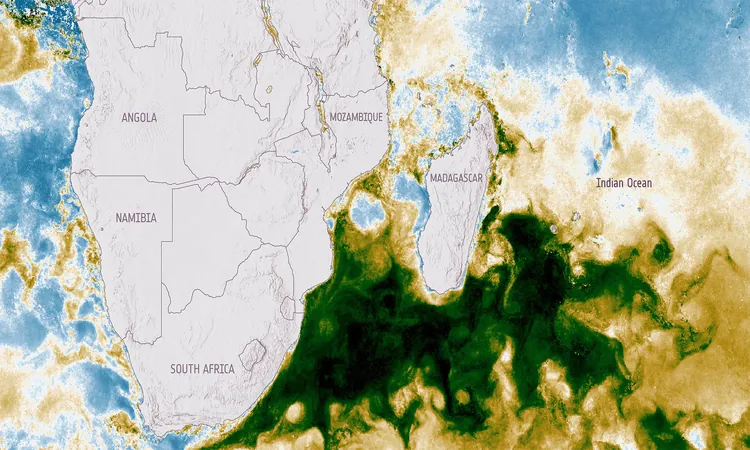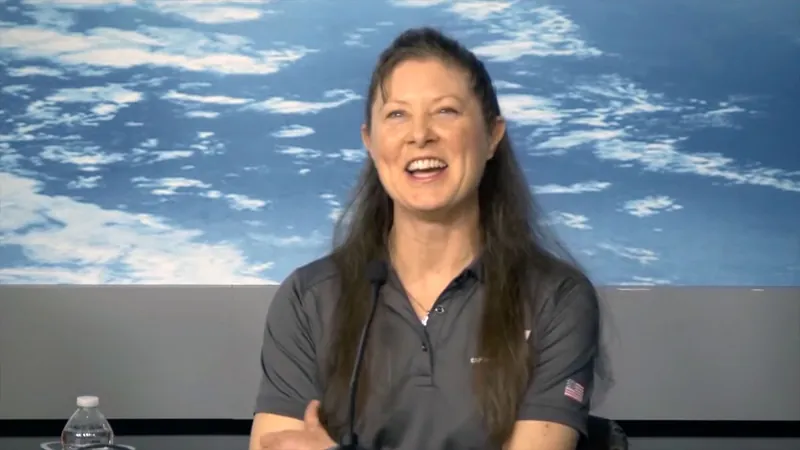
The Astounding Impact of African Dust: Unveiling a Massive Phytoplankton Bloom
2024-10-05
Author: Daniel
The Nutritional Journey of Dust
Dust might seem trivial at first, but it plays a vital role in global ecosystems. When powerful wind storms lift dust from regions like the Sahara Desert, these particles can travel thousands of miles, often crossing the vast Atlantic Ocean. As they settle on land or water, they deposit essential nutrients that stimulate plant growth and enhance ocean health—serving as a vital nutrient buffet for marine phytoplankton.
Bridging the Gap Between Dust and Ocean Life
Despite our understanding that dust has far-reaching effects, the intricate connection between desertification, dust emissions, and ocean fertilization remains a scientific puzzle. Recent research published in the journal PNAS Nexus has made significant strides in illuminating these complex relationships.
A Rare Phenomenon Unveiled
A research team, including scientists from ESA’s Living Planet Fellowships Poseidon and Pyroplankton, was pivotal in tracing an extraordinary phytoplankton bloom off eastern southern Africa, specifically southeast of Madagascar. Led by Dr. John Gittings from the University of Athens, their study revealed that this bloom was primarily driven by “dust wet deposition” (precipitation combined with dust particles).
Tracking the Dust Trail
Using a wealth of satellite data from various projects, including the ESA Climate Change Initiative, the researchers effectively mapped the extent of the bloom and identified the dust events that catalyzed it. This collaboration highlighted the rich potential of remote sensing technology in environmental monitoring and research.
Closer Look at Future Trends
Dr. Gittings expressed concerns over the unusual nature of this bloom in light of an alarming trend of rising temperatures and increasing dust emissions in southern Africa. These occurrences may foreshadow more frequent phytoplankton blooms attributed to climate change. Recent findings also suggest a link between climate-related mega-fires and ocean fertilization, adding another layer to our understanding of how changing climates influence marine ecosystems.
Dust: A Double-Edged Sword
While dust can enrich ecosystems — improving soil fertility and nourishing plankton that underpins the marine food web — it can also contribute to air pollution, negatively impacting public health and visibility. Recognizing dust's multifaceted role is crucial for developing strategies to maximize its benefits while mitigating adverse effects.
Future Research Directions
The research spearheaded by Dr. Gittings and his colleagues underscores the critical need for ongoing study into how dust influences ecological and climatic dynamics. Enhanced international cooperation, sophisticated satellite monitoring, and advanced climate modeling will be essential in deciphering these complexities.
The Interconnectedness of Our Planet
Marie-Helene Rio from ESA pointed out the ocean's pivotal role, which covers two-thirds of Earth and is essential to ecosystem health. Understanding how climate change is impacting ocean life is not just an academic endeavor — it’s vital for the survival of numerous species, including humans.
Dr. Gittings remarked, “Accessing detailed satellite datasets allowed us to accurately track the size of this watery bloom and pinpoint its dust origins.” This research serves as a reminder of our planet’s interconnected nature, demonstrating that even the smallest particles can spark monumental changes in our environment.
As we continue to unravel the threads connecting dust, deserts, oceans, and climate, it becomes increasingly clear that understanding these dynamics is crucial in our fight against climate change and environmental degradation.



 Brasil (PT)
Brasil (PT)
 Canada (EN)
Canada (EN)
 Chile (ES)
Chile (ES)
 España (ES)
España (ES)
 France (FR)
France (FR)
 Hong Kong (EN)
Hong Kong (EN)
 Italia (IT)
Italia (IT)
 日本 (JA)
日本 (JA)
 Magyarország (HU)
Magyarország (HU)
 Norge (NO)
Norge (NO)
 Polska (PL)
Polska (PL)
 Schweiz (DE)
Schweiz (DE)
 Singapore (EN)
Singapore (EN)
 Sverige (SV)
Sverige (SV)
 Suomi (FI)
Suomi (FI)
 Türkiye (TR)
Türkiye (TR)